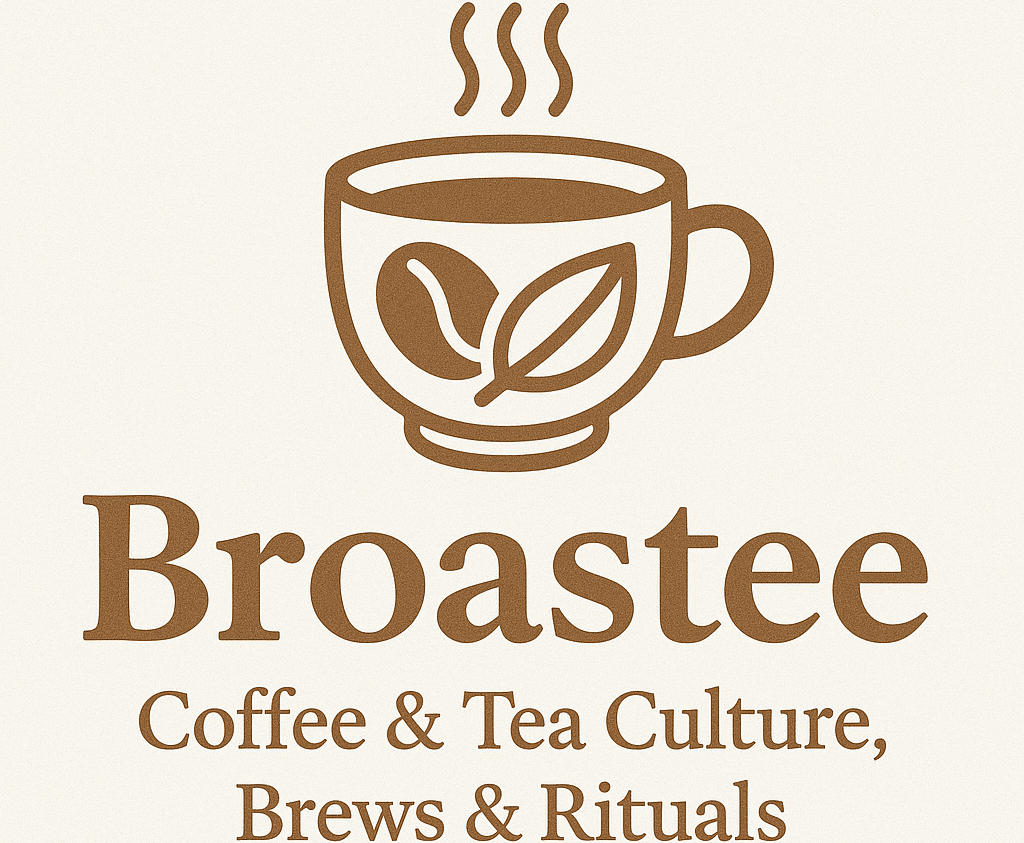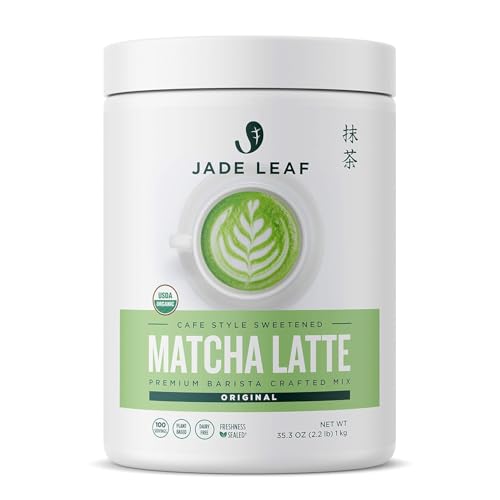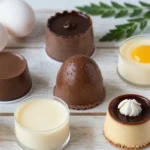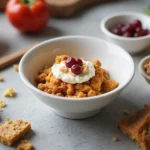We’re witnessing a matcha revolution sweeping across coffee shops and kitchens nationwide. This vibrant green powder isn’t just another trendy ingredient – it’s a powerhouse of antioxidants and sustained energy that’s transforming how we think about our daily beverages.
From creamy lattes to refreshing iced teas and innovative cocktails, matcha’s versatility makes it the perfect base for countless delicious drinks. Whether you’re a longtime matcha enthusiast or curious newcomer, finding the right preparation can make all the difference between a bitter disappointment and a sublime experience.
We’ve tested dozens of matcha beverages to bring you the ultimate guide to the best matcha drinks you can make at home or order at your favorite café. These carefully selected recipes and recommendations will help you discover why matcha has become the go-to choice for health-conscious drink lovers everywhere.
Traditional Matcha Tea: The Classic Foundation of All Matcha Drinks
Traditional matcha tea forms the essential base that elevates every matcha beverage we’ll explore throughout this guide. Mastering this foundational preparation unlocks the full potential of matcha’s complex flavor profile and health benefits.
Ceremonial Grade vs. Culinary Grade Matcha
Ceremonial grade matcha delivers the purest drinking experience with its vibrant jade color and naturally sweet flavor profile. We recommend this premium grade for traditional tea preparation since it’s made from the youngest tea leaves and requires minimal processing. Stone grinding preserves delicate compounds that create matcha’s signature umami taste without bitter undertones.
Culinary grade matcha offers a more robust flavor that works perfectly for mixed beverages and cooking applications. This grade costs significantly less than ceremonial varieties while maintaining excellent nutritional benefits. We find culinary matcha ideal for lattes, smoothies, and baked goods where its stronger taste complements other ingredients.
| Grade Type | Price Range | Best Uses | Flavor Profile |
|---|---|---|---|
| Ceremonial | $25-80/oz | Traditional tea, light drinks | Sweet, delicate, umami |
| Culinary | $8-25/oz | Lattes, smoothies, baking | Bold, slightly bitter |
Proper Whisking Techniques for Perfect Consistency
M-shaped motions create the ideal frothy texture that defines authentic matcha tea preparation. We start by sifting 1-2 teaspoons of matcha powder to eliminate clumps that would otherwise create an uneven texture. Quick wrist movements generate the micro-foam that transforms bitter powder into smooth, creamy liquid.
Bamboo whisks (chasen) work more effectively than metal alternatives because their flexible tines incorporate air without damaging delicate matcha particles. Electric frothers can substitute in modern kitchens, though they produce different texture results than traditional whisking methods.
Consistent pressure throughout the whisking process ensures uniform distribution of matcha particles. We whisk for 30-60 seconds until the surface develops a light foam layer that indicates proper preparation completion.
Temperature and Timing for Optimal Flavor
Water temperature between 160-175°F prevents bitter compounds from overwhelming matcha’s natural sweetness. Boiling water destroys beneficial catechins and creates harsh flavors that mask matcha’s subtle complexity. We use a thermometer initially, then learn to recognize the proper temperature by sight and steam patterns.
Timing precision affects every aspect of matcha tea quality from initial mixing to final consumption. Fresh preparation within 2-3 minutes of whisking maintains optimal flavor and prevents separation that occurs as matcha particles settle.
Pre-warming bowls helps maintain ideal serving temperature while preventing rapid cooling that diminishes taste quality. This traditional step takes 30 seconds but significantly improves the overall drinking experience we’re creating.
Matcha Latte: The Creamy Coffee Shop Favorite
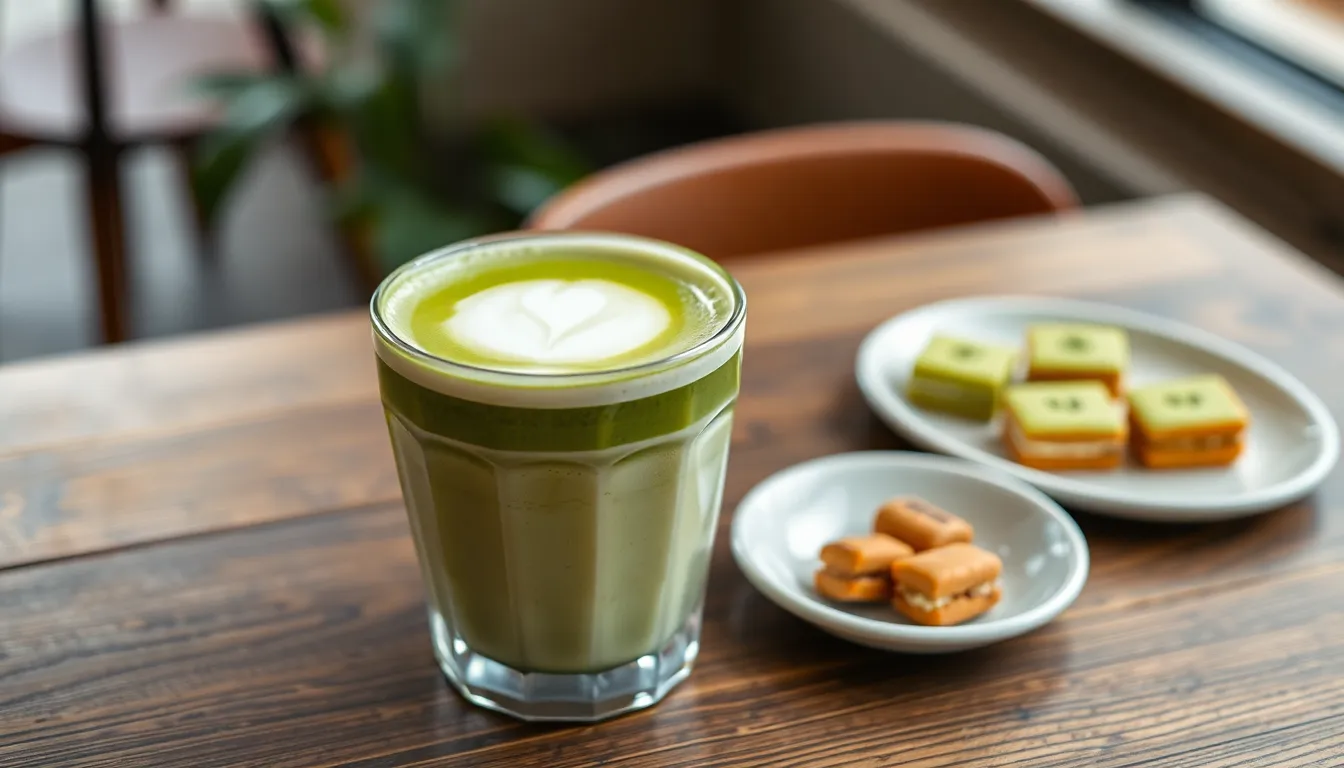
The matcha latte stands as the perfect bridge between traditional tea culture and modern café favorites. This beloved beverage transforms earthy matcha powder into a smooth, creamy drink that’s captured hearts worldwide.
Hot Matcha Latte Preparation Methods
Sifting creates the foundation for any exceptional hot matcha latte by removing stubborn lumps from the powder. We always start this crucial step to ensure our final beverage maintains a silky texture without gritty particles.
Whisking techniques determine the quality of your matcha base, requiring either up-and-down or side-to-side motions until the mixture becomes frothy. Temperature control proves essential here, as we combine matcha powder with hot water that’s cooled slightly from boiling to preserve the delicate flavors.
Adding steamed milk transforms the concentrated matcha base into a luxurious café-style drink. Pour the warm, velvety milk over your whisked matcha mixture, then whisk everything together until completely combined and beautifully integrated.
Sweetening options enhance the natural flavors without overwhelming the matcha’s complexity. Choose from honey for floral notes, maple syrup for richness, or stevia for a zero-calorie alternative that won’t mask the tea’s inherent sweetness.
Iced Matcha Latte Variations
Preparation begins with creating a concentrated hot matcha base using the traditional whisking method. We recommend making this mixture stronger than usual since ice dilution will balance the intensity perfectly.
Chilling the matcha base allows the flavors to meld while preventing the ice from immediately melting when combined. This step ensures your iced latte maintains its vibrant color and bold taste throughout your drinking experience.
Vanilla oat milk elevates the standard iced matcha latte with subtle sweetness and exceptional creaminess. Other non-dairy alternatives like almond or coconut milk create equally delicious variations with unique flavor profiles.
Ice cube placement requires strategic timing to achieve the perfect temperature balance. Add ice cubes to your glass first, then pour the chilled matcha mixture over them before topping with your chosen cold milk.
Plant-Based Milk Alternatives for Matcha Lattes
Coconut milk delivers unmatched creaminess that rivals traditional dairy while adding subtle tropical undertones. Its naturally rich texture creates luxurious matcha lattes that feel indulgent without heaviness.
Almond milk offers a lighter, more refreshing experience that allows matcha’s earthy notes to shine through clearly. We find this option perfect for those who prefer subtle milk flavors that complement rather than compete with the tea.
Oat milk provides the most neutral flavor profile among plant-based alternatives, making it incredibly popular for matcha beverages. Its creamy consistency mimics dairy milk closely while maintaining the drink’s authentic taste balance.
Matcha Bubble Tea: The Trendy Taiwanese Twist
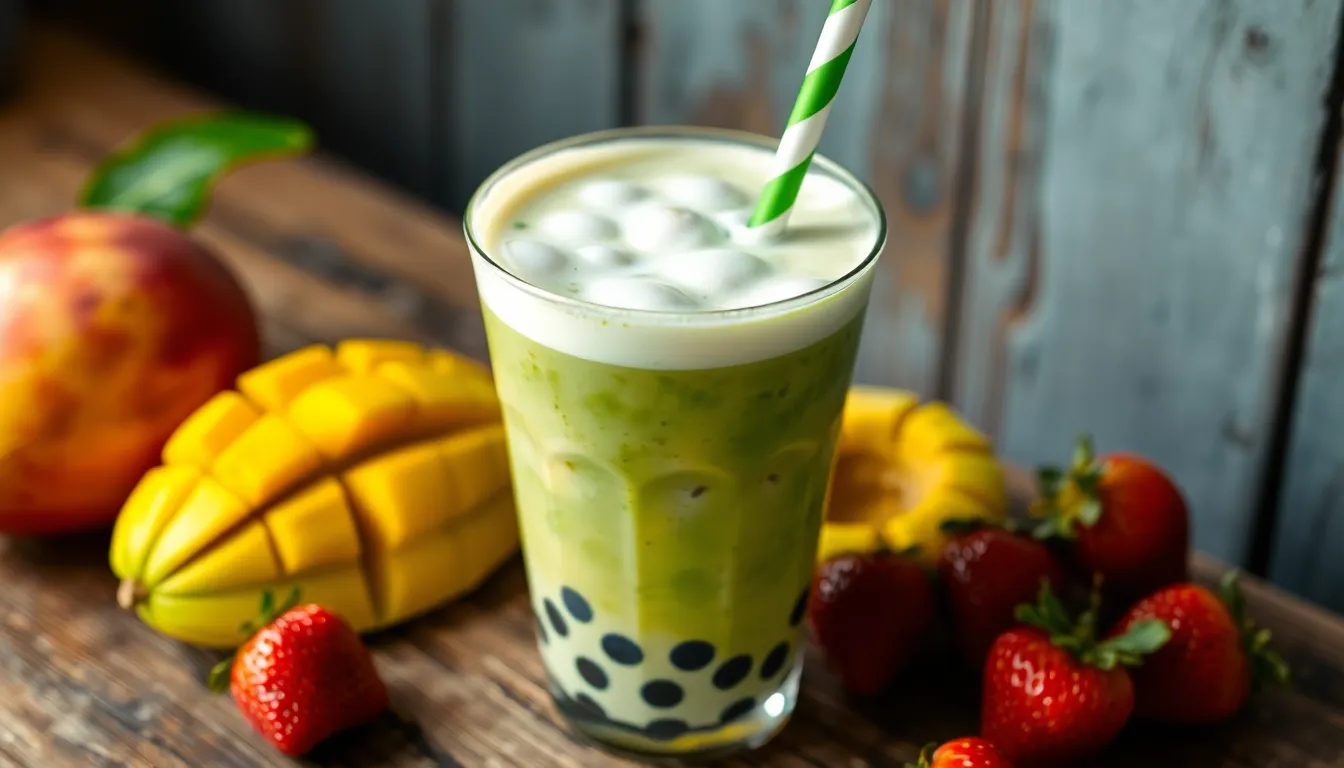
Matcha bubble tea transforms the traditional Japanese tea experience by combining vibrant matcha powder with chewy tapioca pearls and creamy milk. This Taiwanese innovation creates a refreshing drink that delivers both the earthy complexity of matcha and the playful texture of boba.
Choosing the Right Tapioca Pearls
Perfect tapioca pearls require precise cooking to achieve the ideal chewy texture that complements matcha’s smooth consistency. We recommend boiling the pearls in water for approximately 12 minutes, then allowing them to rest for another 12 minutes to reach optimal softness. Quality matters when selecting your boba – brands without artificial ingredients provide a more natural taste that doesn’t compete with matcha’s delicate flavor profile. Fresh pearls should have a glossy appearance and maintain their shape while offering gentle resistance when bitten.
Sweetness Levels and Flavor Combinations
Brown sugar simple syrup creates the perfect sweetness balance for matcha bubble tea without overpowering the tea’s natural earthy notes. Alternative sweeteners like maple syrup offer unique flavor dimensions that enhance rather than mask the matcha experience. Fruit purees such as mango or strawberry provide exciting flavor combinations that complement matcha’s vegetal characteristics. We’ve found that starting with less sweetener allows you to adjust according to your preference while preserving the matcha’s authentic taste.
Hot vs. Cold Bubble Tea Options
Cold matcha bubble tea remains the most popular preparation method, as ice and chilled milk help preserve the vibrant green color and fresh flavor profile. Layering creates visual appeal while ensuring each sip delivers the perfect ratio of matcha, milk, and boba pearls. Hot variations work best with reduced ice and warmed milk or creamer, though this preparation requires careful temperature control to prevent the matcha from becoming bitter. Cold serving maintains the drink’s Instagram worthy appearance while delivering the refreshing experience that made bubble tea a global phenomenon.
Matcha Smoothies: The Nutritious Energy Boost
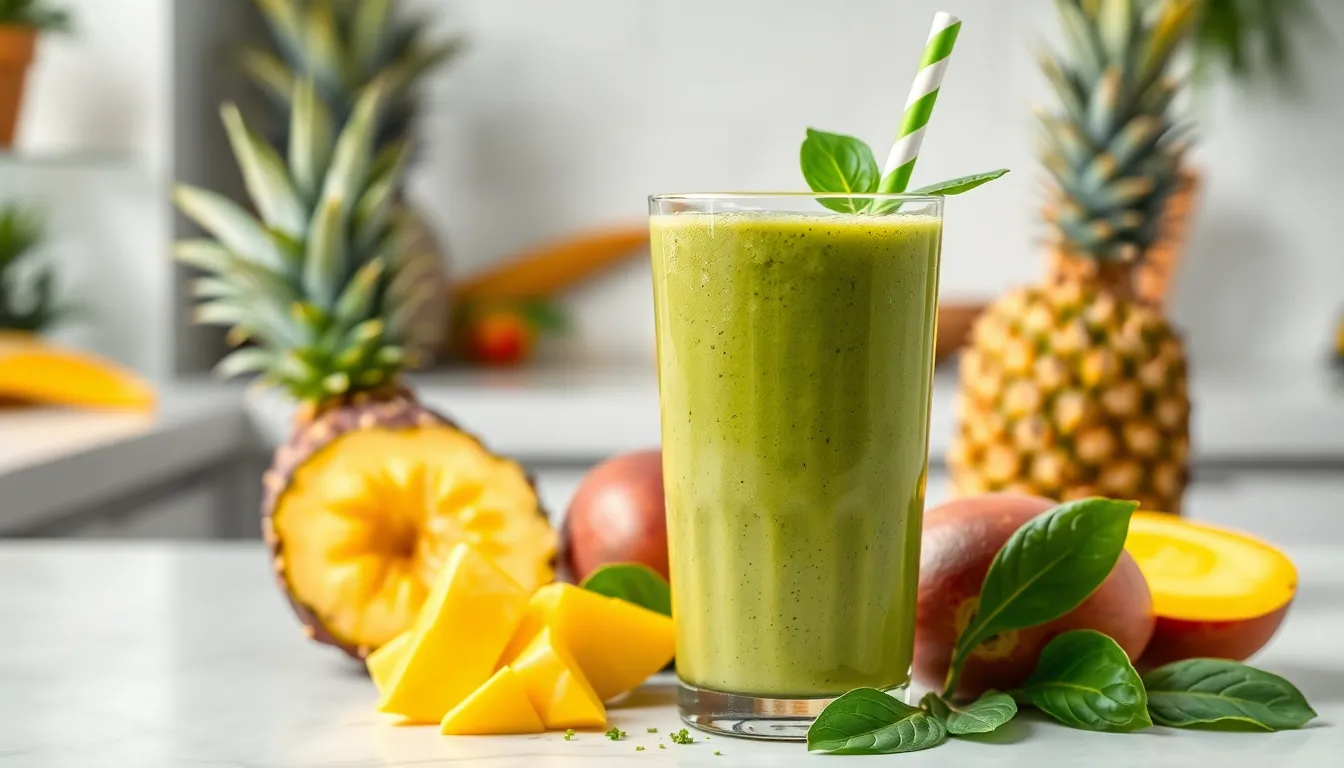
Matcha smoothies deliver a powerful combination of sustained energy and essential nutrients that traditional caffeine drinks simply can’t match. We’ve discovered that blending matcha with complementary ingredients creates delicious drinks that fuel your day while providing antioxidants and vitamins.
Green Goddess Matcha Smoothie Recipe
Green Goddess matcha smoothies pack an incredible nutritional punch by combining antioxidant-rich matcha with nutrient-dense leafy greens. We blend ceremonial grade matcha with fresh kale and spinach to create a vibrant drink that doesn’t compromise on taste. Adding ripe bananas provides natural sweetness while almond milk creates the perfect creamy texture.
Our favorite Green Goddess recipe includes:
- 1 teaspoon ceremonial grade matcha powder
- 1 cup fresh spinach or kale
- 1 frozen banana
- 1 cup unsweetened almond milk
- 1 tablespoon almond butter
Blending these ingredients creates a smooth consistency that masks any bitterness from the greens while amplifying matcha’s earthy flavor profile. We recommend starting with less matcha and adjusting to taste preference.
Tropical Matcha Smoothie Blends
Tropical matcha smoothies transport your taste buds to paradise while delivering antioxidant benefits in every sip. We combine matcha powder with exotic fruits like pineapple and mango to create refreshing blends that balance earthiness with tropical sweetness. Coconut milk adds richness and complements matcha’s natural flavor without overpowering it.
Creating tropical variations involves experimenting with different fruit combinations:
- Pineapple and coconut for classic tropical vibes
- Mango and passion fruit for intense sweetness
- Papaya and lime for tangy complexity
We’ve found that frozen tropical fruits work exceptionally well because they create a thick, creamy texture without requiring additional ice. These smoothies work perfectly as breakfast replacements or afternoon energy boosters.
Protein-Packed Post-Workout Matcha Smoothies
Protein matcha smoothies provide the perfect recovery drink after intense workouts by combining muscle-building nutrients with natural energy restoration. We blend high-quality matcha with Greek yogurt and protein powder to create drinks that support muscle recovery while replenishing energy stores. Adding sliced almonds provides healthy fats and extra protein for sustained satisfaction.
Our go-to post-workout formula includes:
- 1 teaspoon culinary grade matcha
- 1/2 cup Greek yogurt
- 1 scoop vanilla or unflavored protein powder
- 1 banana
- 1 cup almond milk
- 1 tablespoon sliced almonds
Timing matters when consuming these protein-rich smoothies. We recommend drinking them within 30 minutes after workouts to maximize muscle recovery benefits. Plant-based protein options like pea or hemp protein work equally well for those avoiding dairy products.
Matcha Cocktails: The Sophisticated Evening Option
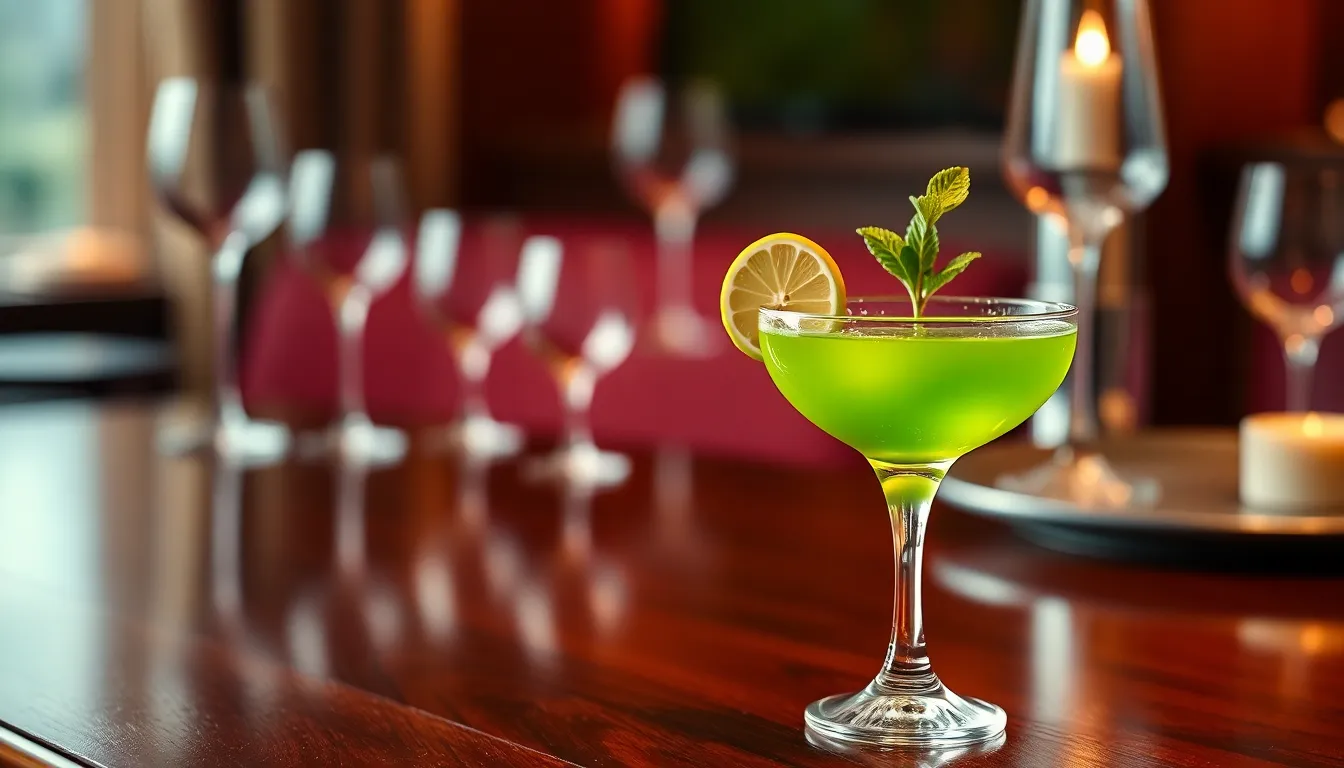
Elevating your matcha experience beyond daytime beverages opens up a industry of sophisticated cocktail possibilities. These evening drinks combine the earthy complexity of matcha with premium spirits to create memorable cocktails perfect for entertaining or unwinding after a long day.
Matcha Martini and Gin-Based Cocktails
Creamy Matcha Martini (Matchatini) stands out as the ultimate sophisticated choice for matcha cocktail enthusiasts. We blend gin with almond milk and amaretto to create this elegant drink that’s both refined and surprisingly simple to prepare. The amaretto adds a subtle sweetness that perfectly balances matcha’s natural earthiness.
Traditional Matcha Martini offers a cleaner profile by combining premium gin with matcha syrup and a touch of simple syrup. Shaking this mixture with ice creates a beautifully frothy texture that showcases the vibrant green color of quality matcha powder.
Gin and Matcha Fizz transforms the classic gin fizz by incorporating matcha powder into the base mixture. Adding fresh lemon juice and club soda creates a refreshing effervescent drink that highlights matcha’s grassy notes while maintaining the cocktail’s light and airy character.
Sake and Matcha Fusion Drinks
Matcha Sake Highball represents the perfect marriage of two Japanese traditions in one sophisticated glass. We combine premium sake with matcha syrup, fresh lemon juice, and a splash of club soda to create this refreshing Japanese inspired cocktail that honors both ingredients’ heritage.
Traditional Matcha Tea Sake offers a more contemplative approach by whisking ceremonial grade matcha with warm sake instead of water. This preparation method creates a unique drinking experience that bridges the gap between traditional tea ceremony and modern cocktail culture.
Sparkling Matcha Sake Cocktail elevates the fusion concept by combining chilled sake with matcha powder and sparkling water. Fresh lime juice adds brightness while honey syrup provides subtle sweetness that complements both the sake’s delicate flavor and matcha’s earthy complexity.
Non-Alcoholic Matcha Mocktails
Matcha Mojito Mocktail delivers all the refreshing qualities of a traditional mojito without the rum. We muddle fresh mint leaves with lime juice and matcha powder before topping with sparkling water to create this invigorating alcohol free alternative.
Summer Glow Smoothie blends mango, papaya, strawberry, and matcha into a vibrant mocktail that’s both nutritious and delicious. This fruity combination provides natural sweetness while the matcha adds sustained energy and antioxidant benefits.
Sparkling Matcha Lemonade combines fresh lemon juice with matcha syrup and sparkling water for a zesty mocktail. Adding a rim of matcha powder and sugar creates an elegant presentation that rivals any alcoholic cocktail in both appearance and flavor complexity.
Matcha Frappés: The Indulgent Dessert Drink
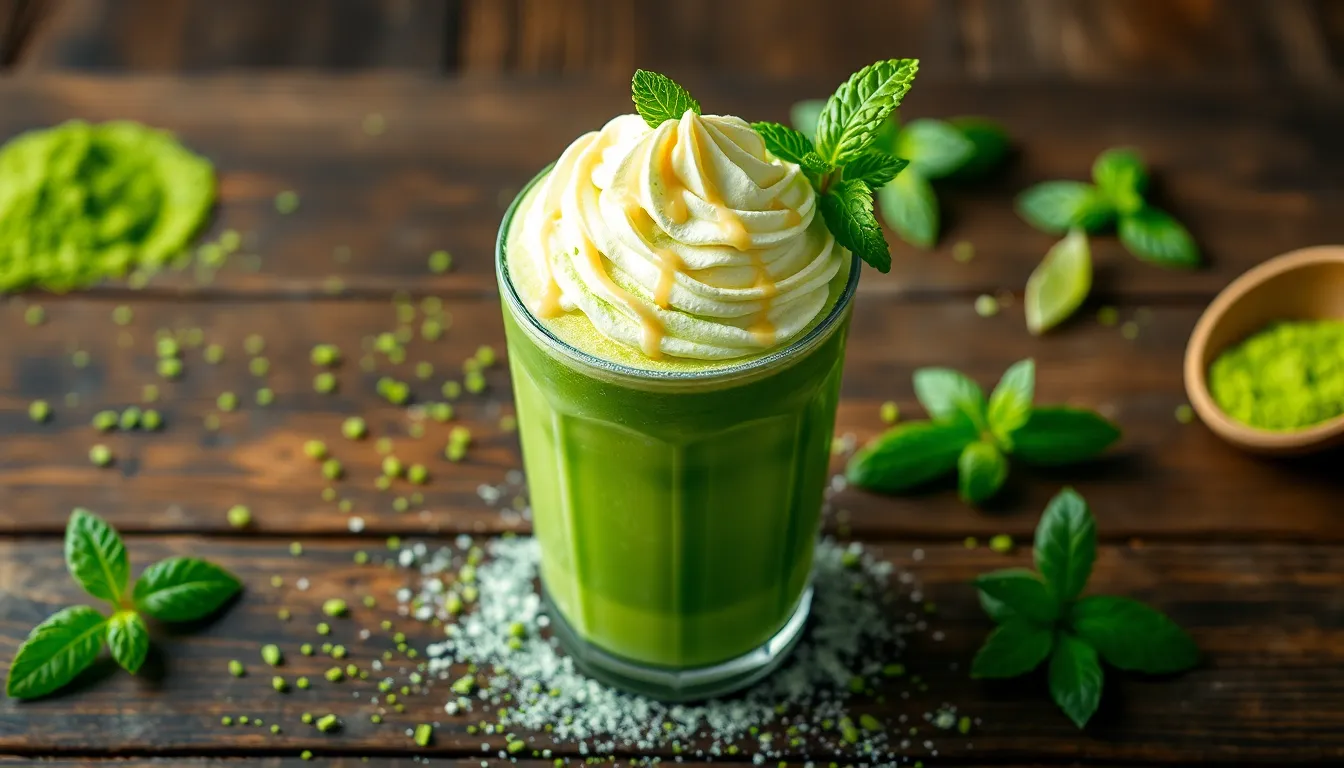
Building on our exploration of matcha beverages, we’ll now jump into one of the most popular dessert-style drinks. Matcha frappés blend the earthy complexity of matcha powder with creamy indulgence, creating a refreshing treat that satisfies both matcha enthusiasts and dessert lovers.
Whipped Cream and Sweetener Options
Whipped cream transforms our matcha frappé into a luxurious dessert drink by adding rich, creamy texture that contrasts beautifully with the earthy matcha base. Fresh whipped cream works best, though store-bought alternatives can save time without significantly compromising quality.
Vanilla syrup enhances the natural sweetness while complementing matcha’s grassy notes perfectly. We recommend starting with 1-2 tablespoons and adjusting to taste, as higher-quality matcha requires less sweetener due to its naturally less bitter profile.
Sugar alternatives offer flexibility for different dietary preferences, including maple syrup, agave nectar, or stevia. Brown sugar simple syrup adds depth with its molasses undertones, while coconut sugar provides subtle caramel notes that pair exceptionally well with matcha’s complexity.
Xanthan gum creates an incredibly smooth texture when added in small amounts (1/8 teaspoon per serving). This ingredient helps bind the liquid components together, preventing separation and creating that coveted frappé consistency we find in professional café drinks.
Ice Blending Techniques for Perfect Texture
Blending for at least 30 seconds ensures proper ice crushing and complete matcha powder integration throughout the drink. We’ve found that starting with smaller ice cubes produces better results than large chunks, which can create an uneven texture.
Filtered water ice cubes prevent off-flavors that can interfere with matcha’s delicate taste profile. Tap water often contains chlorine or minerals that become concentrated when frozen, potentially masking the subtle notes we want to highlight in our frappé.
Pulse blending technique works best for controlling texture development, allowing us to achieve the perfect balance between smooth liquid and satisfying ice crystals. Start with short pulses, then blend continuously until reaching desired consistency.
High-speed blenders deliver superior results compared to standard blenders, breaking down ice more efficiently and creating that signature frappé smoothness. We recommend using the highest speed setting for the final 15-20 seconds of blending.
Matcha White Chocolate Combinations
White chocolate and matcha create perfect flavor harmony due to their complementary taste profiles, with white chocolate’s creamy sweetness balancing matcha’s earthy bitterness. This combination has become increasingly popular in premium dessert applications.
Melted white chocolate chips blend seamlessly into our frappé base, creating rich indulgence without overwhelming the matcha’s distinctive character. We suggest using 2-3 tablespoons of melted white chocolate per serving for optimal flavor balance.
White chocolate syrup offers convenience while maintaining the desired flavor profile, though we recommend checking ingredient lists to avoid artificial additives that might clash with quality matcha powder.
Temperature control becomes crucial when incorporating white chocolate, as overheating can cause separation or grittiness in the final drink. Allow melted chocolate to cool slightly before adding to the cold frappé mixture for best results.
Matcha Milk Tea: The Asian-Inspired Comfort Drink
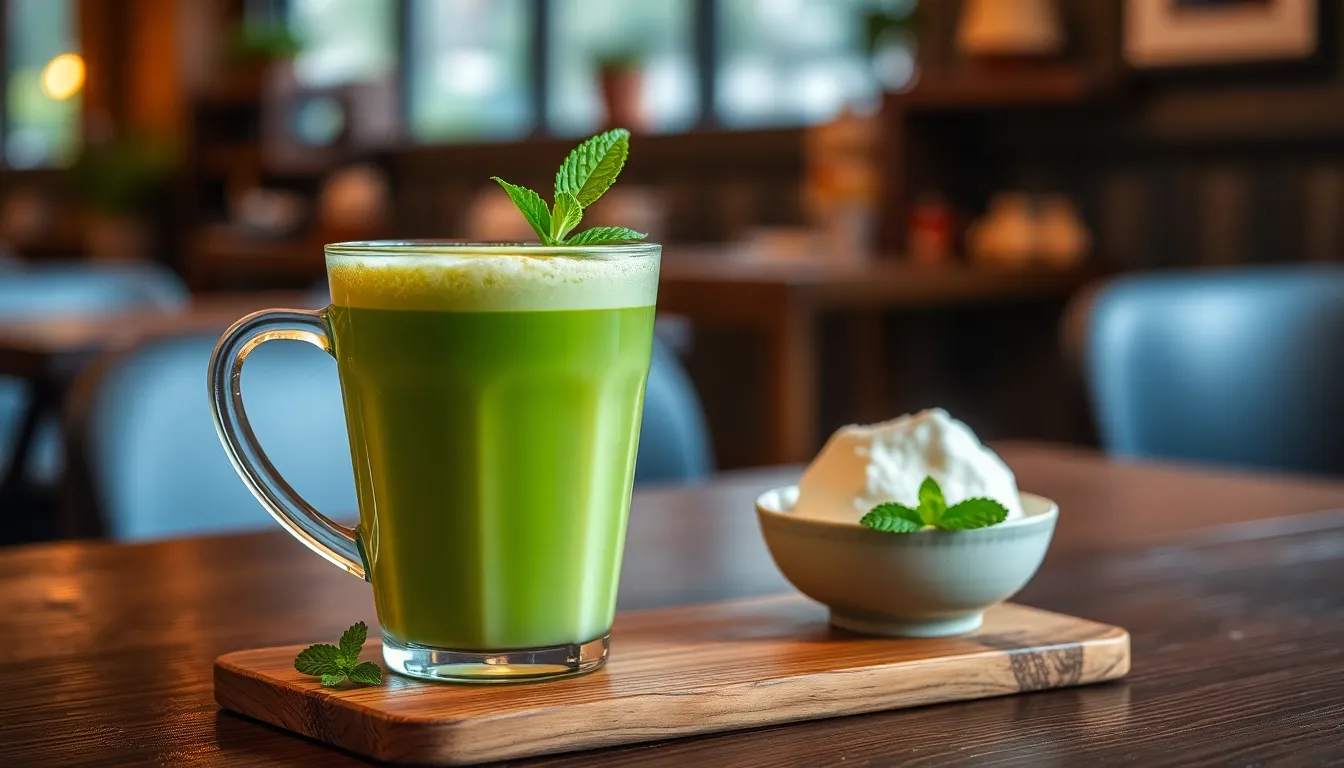
We’ve discovered that matcha milk tea represents one of the most beloved comfort beverages across Asian cultures, blending ceremonial tea traditions with modern café convenience. This creamy drink transforms traditional matcha into an accessible everyday pleasure that satisfies both matcha newcomers and seasoned enthusiasts.
Hong Kong Style Matcha Milk Tea
Hong Kong style matcha milk tea delivers an intensely rich experience that we consider the gold standard for milk tea preparation. Baristas use stronger matcha powder concentrations, typically doubling the amount found in standard recipes to create a bold, earthy flavor that cuts through the milk’s richness. Steamed milk creates the signature frothy texture that mimics premium coffee shop lattes, while condensed milk adds both sweetness and luxurious creaminess.
Traditional Hong Kong tea shops prepare this drink using a exact milk to matcha ratio that emphasizes the tea’s complexity rather than masking it. We’ve found that the steaming process creates microfoam that enhances the drinking experience, making each sip smooth and velvety. Many establishments serve this style at slightly cooler temperatures than traditional matcha tea, allowing the milk’s sweetness to balance the matcha’s natural bitterness.
Thai-Inspired Matcha Milk Tea Variations
Thai variations transform matcha milk tea into tropical comfort drinks that we absolutely love for their creative approach to traditional recipes. Coconut milk replaces dairy milk in many Thai preparations, creating a naturally sweet and creamy base that complements matcha’s grassy notes. Palm sugar serves as the preferred sweetener, offering caramel undertones that enhance the drink’s complexity without overwhelming the matcha flavor.
Creative Thai tea shops often incorporate vanilla extract or coconut extract to add aromatic depth to their matcha milk teas. We’ve noticed that these additions create layers of flavor that evolve as you drink, starting with coconut sweetness and finishing with matcha’s signature earthiness. Plant based milk alternatives like oat milk and almond milk also appear frequently in Thai inspired preparations, each contributing unique textures and subtle flavor profiles.
Condensed Milk vs. Fresh Milk Preparations
| Milk Type | Texture | Sweetness Level | Best Applications |
|---|---|---|---|
| Condensed Milk | Thick, creamy | Very sweet | Hong Kong style, dessert drinks |
| Fresh Milk | Light, smooth | Neutral | Hot/iced versions, customizable sweetness |
Condensed milk preparations create dessert like matcha drinks that we recommend for those who prefer sweeter beverages. This style provides immediate sweetness and richness without requiring additional sugar or sweeteners, making it perfect for quick preparation at home or in busy café environments. The thick consistency of condensed milk also creates a more indulgent drinking experience that satisfies sweet cravings.
Fresh milk offers versatility that we appreciate for customizable matcha milk tea experiences. This preparation method allows complete control over sweetness levels, enabling you to add honey, maple syrup, or other preferred sweeteners to taste. Fresh milk works equally well in hot and iced preparations, maintaining its smooth texture across temperature ranges while allowing the matcha’s natural flavors to shine through more prominently than condensed milk versions.
Sparkling Matcha Drinks: The Refreshing Summer Choice
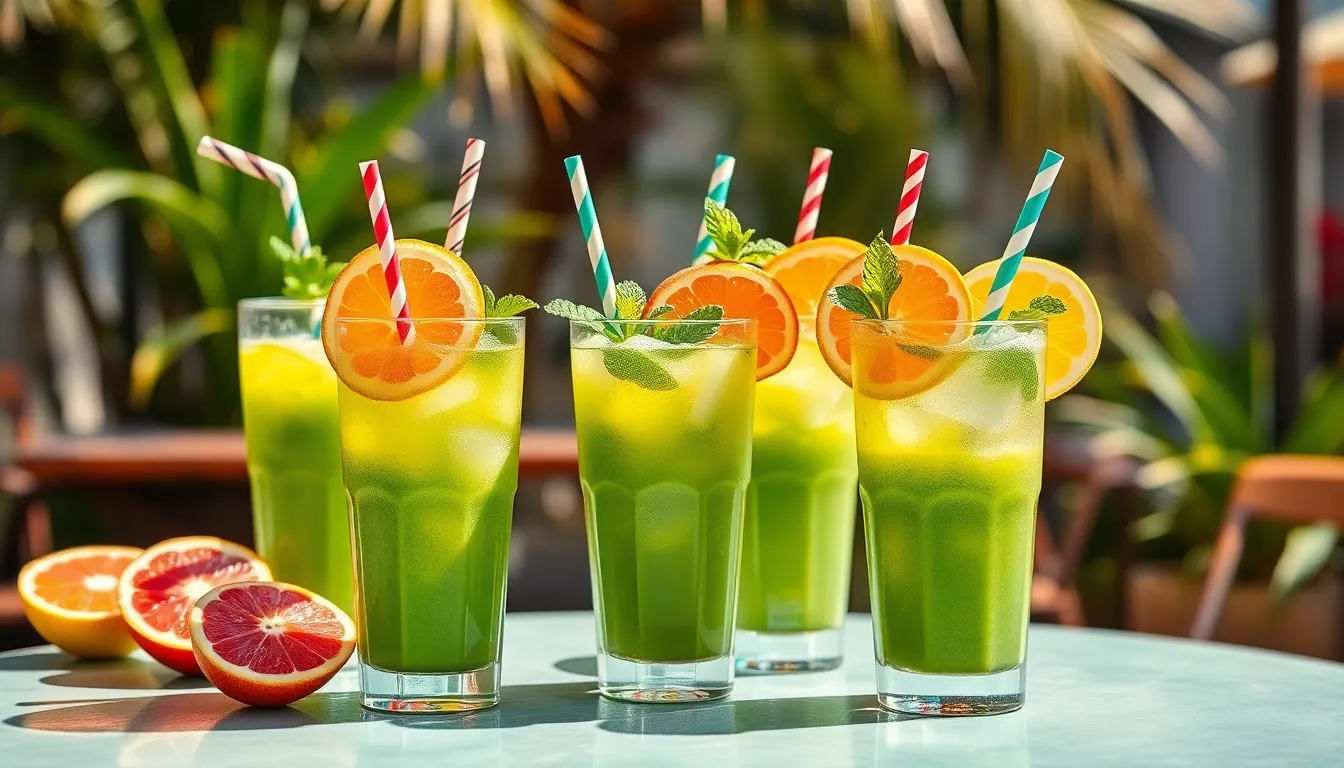
Moving beyond traditional preparations, sparkling matcha drinks offer an exciting twist that transforms this ancient tea into modern refreshment. These effervescent beverages combine matcha’s earthy complexity with the invigorating sensation of carbonation.
Matcha Soda and Tonic Water Combinations
Matcha soda creates an instantly refreshing drink by combining one tablespoon of matcha with boiling water, then adding it to a pitcher filled with ice and sparkling water. Traditional tonic water adds a unique blend of flavors when mixed with matcha, creating opportunities for experimentation with different tonic varieties.
Customized flavor profiles emerge when we pair matcha with lemon tonic or elderflower tonic water. Each tonic variety brings its own botanical notes that complement matcha’s natural grassiness. Premium tonic waters with natural quinine provide the most balanced flavor combination.
Simple preparation involves whisking matcha powder with a small amount of hot water first, then gradually adding cold tonic water over ice. This method prevents clumping and ensures even distribution of flavors throughout the drink.
Citrus-Infused Sparkling Matcha Beverages
Lemon matcha sparkler combines matcha with fresh lemon juice and honey for a sweet and tangy flavor profile, topped with sparkling water for effervescence. Fresh citrus brightens matcha’s earthy notes while honey provides natural sweetness that balances the overall taste.
Sakura matcha soda blends cherry blossom syrup with matcha and sparkling water for a delicate floral twist. This Japanese-inspired combination celebrates seasonal flavors while maintaining matcha’s distinctive character.
Lime variations offer zesty alternatives by incorporating fresh lime juice and simple syrup with matcha before adding carbonated water. Mint leaves can be muddled gently to add an additional layer of freshness to these citrus-forward drinks.
Orange combinations pair beautifully with matcha’s natural flavor, using fresh orange juice or orange bitters to create complex sparkling beverages that work well for both casual sipping and special occasions.
DIY Carbonation Methods for Home Preparation
Soda makers provide the most controlled carbonation level when preparing matcha drinks at home. These devices allow us to carbonate water infused with matcha for consistent results every time.
Fizz tablets offer a quick carbonation method by adding them directly to matcha water for instant effervescence. This approach works particularly well for single servings and requires minimal equipment investment.
Carbonated water bottles can be enhanced by adding prepared matcha concentrate, allowing for easy batch preparation of multiple servings. Store-bought sparkling water eliminates the need for special equipment while still delivering excellent results.
Temperature control becomes crucial when using DIY methods, as overly hot matcha can lose carbonation quickly. Preparing matcha concentrate at room temperature and adding it to chilled carbonated water maintains optimal fizz levels.
Conclusion
We’ve explored an incredible range of matcha beverages that showcase this versatile ingredient’s potential beyond traditional tea. From creamy lattes and bubble teas to sophisticated cocktails and refreshing sparklers each drink offers its own unique way to enjoy matcha’s distinctive flavor profile.
Whether you’re seeking a morning energy boost with a matcha smoothie or winding down with an elegant matcha martini there’s a perfect matcha drink waiting for you. The key lies in understanding how different preparation methods and ingredient combinations can enhance or complement matcha’s natural earthy complexity.
We encourage you to experiment with these recipes and discover which matcha creations best suit your taste preferences. With quality matcha powder and the right techniques you’ll be crafting café-worthy drinks in your own kitchen while reaping all the antioxidant benefits this remarkable green tea powder has to offer.
Frequently Asked Questions
What is the difference between ceremonial grade and culinary grade matcha?
Ceremonial grade matcha offers a pure, sweet flavor perfect for traditional tea preparation and drinking straight. Culinary grade has a bolder, more robust taste that works well in mixed drinks, lattes, and cooking applications. Ceremonial grade is higher quality and more expensive, while culinary grade is more affordable and versatile for various recipes.
How do I properly whisk matcha to avoid clumps?
Start by sifting your matcha powder to remove any lumps. Use a bamboo whisk (chasen) and whisk in a zigzag or “M” pattern rather than circular motions. Add a small amount of hot water (175°F) first, whisk into a paste, then gradually add more water while whisking vigorously until frothy.
What’s the best milk alternative for matcha lattes?
Oat milk is often preferred for its creamy texture and neutral flavor that complements matcha well. Coconut milk adds tropical richness, while almond milk provides a lighter option. Each alternative offers unique flavor profiles – choose based on your taste preference and desired creaminess level.
How do I make tapioca pearls for matcha bubble tea?
Cook dried tapioca pearls in boiling water for 15-20 minutes until they become translucent and chewy. Stir occasionally to prevent sticking. Once cooked, rinse with cold water and soak in brown sugar syrup for sweetness. Use quality brands without artificial ingredients for the best texture and flavor.
Can I make matcha cocktails at home?
Yes! Popular options include Matcha Martinis made with vodka or gin, and sake-based drinks like Matcha Sake Highballs. For non-alcoholic versions, try Matcha Mojito Mocktails or Sparkling Matcha Lemonade. Always whisk matcha with a small amount of hot water first before mixing with other ingredients.
What’s the secret to a perfect matcha frappé?
Use smaller ice cubes and a high-speed blender for the smoothest texture. Blend matcha with a small amount of hot water first, then add cold milk, sweeteners, and ice. For white chocolate matcha frappés, melt the chocolate separately and cool slightly before blending to prevent separation.
How do I make sparkling matcha drinks?
First, whisk matcha powder with a small amount of hot water to create a smooth paste. Let it cool, then add to cold tonic water or use a soda maker for carbonation. Add citrus like lemon or lime for extra flavor. Always prepare the matcha base first to prevent clumping when mixed with carbonated water.
What makes matcha smoothies healthier than regular smoothies?
Matcha provides sustained energy without the crash associated with coffee, plus high levels of antioxidants called catechins. When combined with fruits, vegetables, and protein sources like Greek yogurt, matcha smoothies offer comprehensive nutrition including vitamins, minerals, and amino acids like L-theanine for calm focus.
